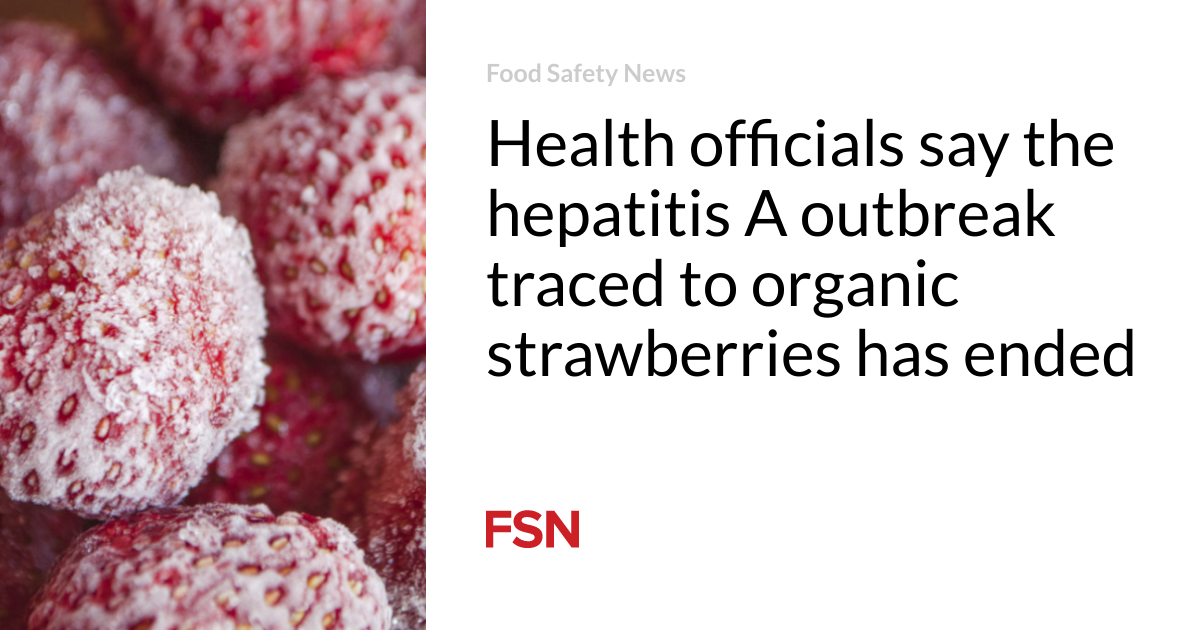Infection
Health officials say the hepatitis A outbreak traced to organic strawberries has ended
An outbreak of hepatitis A infections traced to frozen strawberries from Mexico has been declared over.
The outbreak began in April, and several products were recalled (see list below). As of Sept. 15, the Centers for Disease Control and Prevention reported that ten patients had been confirmed from four states. Four patients were so sick that they had to be admitted to hospitals.
The implicated frozen organic strawberries were distributed nationwide. Sick people were confirmed in California, Hawaii, Oregon and Washington.
“Frozen strawberries have a long shelf life. Consumers should check their freezers for recalled products,” according to an outbreak update from the Food and Drug Administration.
All ten outbreak patients reported eating frozen organic strawberries before becoming sick.
Based on traceback data gathered during the outbreak investigation, organic strawberries imported from Baja California, Mexico, were determined to be the source of the virus. FDA’s traceback investigation identified a common supplier of frozen organic strawberries. Strawberries used by this supplier were imported from certain farms in Baja California, Mexico, in 2022.
Additionally, the strain of hepatitis A virus causing illnesses this year is genetically identical to the strain that caused an outbreak of hepatitis A virus infections in 2022, which was linked to fresh organic strawberries imported from Baja California, Mexico, and sold at various retailers.
For recall details, please see:
About hepatitis A
Food contaminated with hepatitis A will not look or smell bad. Hepatitis A is a highly contagious, vaccine-preventable liver infection caused by the Hepatitis A Virus (HAV).
Not everyone with hepatitis A has symptoms. Adults are more likely to have symptoms than children. If symptoms develop, they usually appear two to seven weeks after infection, at an average of 28-30 days. Symptoms usually last less than two months, although some people can be ill for as long as six months.
Symptoms can include yellow skin or eyes, not wanting to eat, upset stomach, throwing up, stomach pain, fever, dark urine or light-colored stools, diarrhea, joint pain, and tiredness.
Even if no symptoms are present, people can still spread the infection. In addition, a person can transmit hepatitis A to others up to two weeks before symptoms appear.

